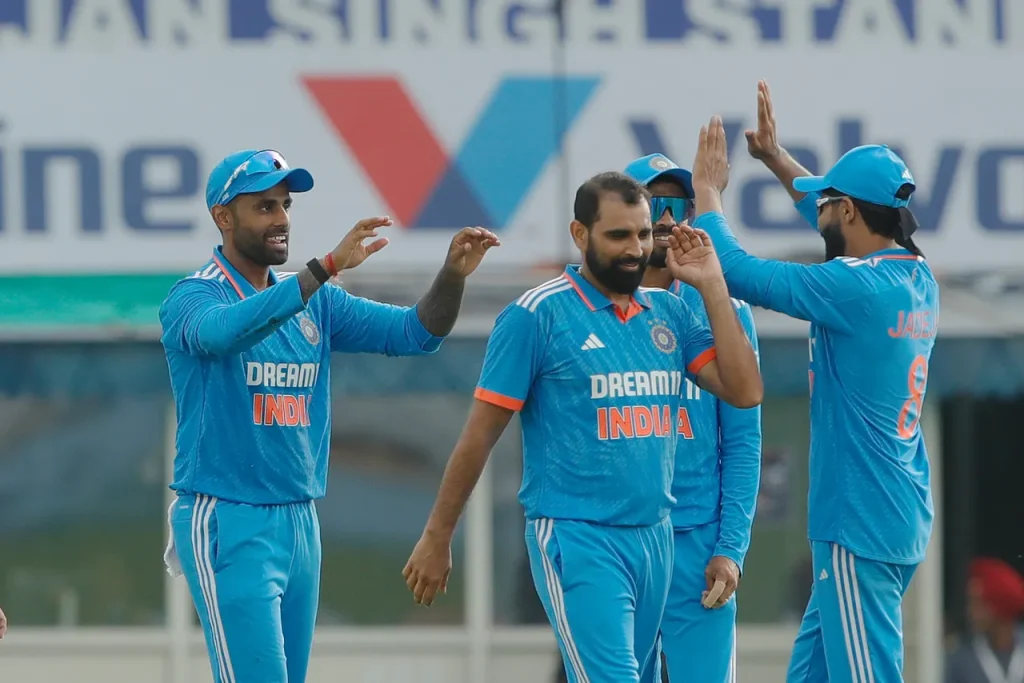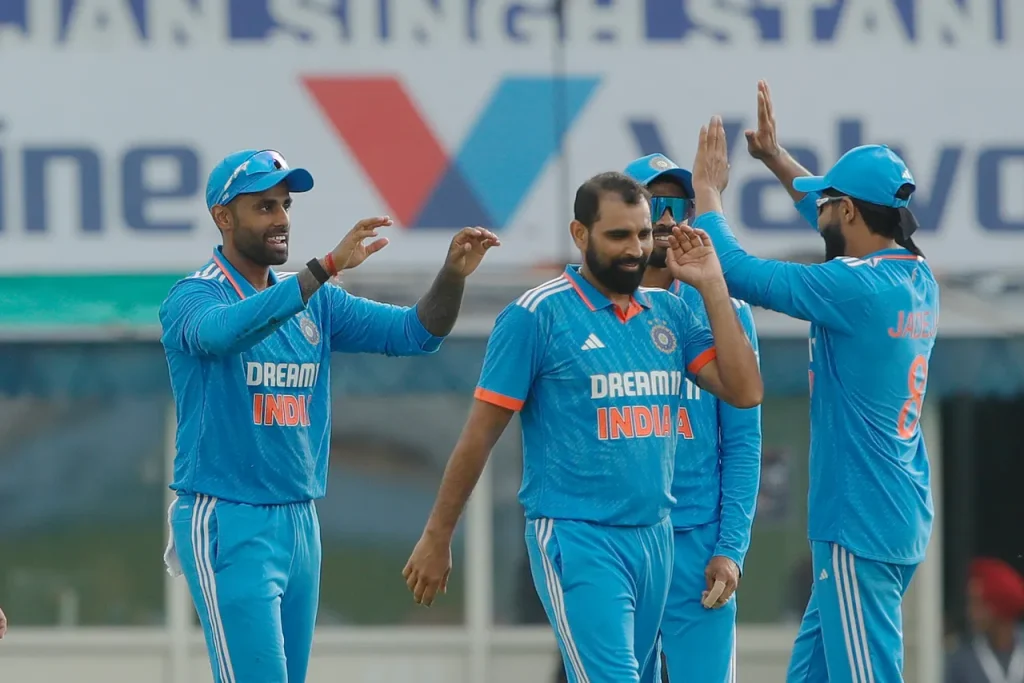India laid down the marker in their three-match ODI series against Australia with a rather comfortable five-wicket win in the first game in Mohali. With the World Cup looming large, here are the five takeaways from the first game.
Timely knock
Before the Mohali ODI, Suryakumar Yadav averaged below 25 and there was scrutiny over his selection for the World Cup. Suyrakumar, though, made an impression in the first ODI by accumulating a crucial fifty and also shared an alliance of 80 with KL Rahul. He paced his innings nicely and played some sumptuous straight drives. When Suryakumar was dismissed, it felt as if he had another couple of gears to play through. The Indian think-tank seems to believe that Suryakumar has that little bit of X-factor about him. He showed some glimpses of that in Mohali.
The Shardul-Shami conundrum
Mohammed Shami bagged his best figures in ODIs – 5 for 51. It was a quintessential performance from Shami as he found a hint of conventional swing and seam movement with the new ball. And then got some contrast swing with the old ball, alongside bowling the occasional off-cutter. On the other hand, Shardul Thakur had a bit of chastening experience as he ended up giving away 78 runs in 10 overs.
Shardul has some potent weapons in his armour – the three-quarter-seam ball, conventional swing, and he isn’t afraid of trying the short ball or the knuckle ball. Shardul has also been the highest wicket-taker for India in ODIs since the 2019 World Cup. On the flip side, he perhaps tries too many variations. In modern-day limited overs cricket, defensive lengths are also very important.
Shardul is also picked in the side as he adds heft to the batting order. Just that he has struggled to play those cameos lower down the order in the last 12 months in the 50-over format. In the World Cup, India might look at either of them depending on the conditions.
How did Ashwin fare?
Ashwin, who turned earlier this month, had last played an ODI in India in January 2017. He provided solid support to the seamers, and finished with creditable figures of 1 for 47. He was helped by the fact that the odd ball stopped on the batters in the first innings. Bowling in the second innings under lights could be a bigger challenge for him. But the think-tank would be quite pleased with Ashwin’s performance in Mohali. With Axar Patel recovering from his hamstring injury, India would believe they have the required back-up just in case Axar is ruled out of the World Cup.
Mitchell Marsh experiment at the top
With Travis Head missing out due to a hand injury, Marsh had to bat at the top of the order. It wasn’t the first time that Marsh had to take over that mantle. Earlier in the year, in an ODI series against India, he had cracked a couple of fifties at the top. He also made a breezy 71 at the Wanderers against South Africa in a recently concluded series. Unfortunately for Marsh, he couldn’t get going in Mohali as he jabbed at a delivery that moved just enough and was caught in the slip cordon.
Marsh does have a tendency to play with hard hands. So, in the second ODI, he would be hoping to navigate through the first few overs and then bring out some of his powerful shots. He has also played 60 of his 78 ODIs in the middle order – from No. 4 to No. 7. However, with the World Cup held in India, batting at the top suits Marsh’s style of batting as the ball would come on to the bat nicely. Otherwise, in the middle overs, he might have to start his innings against spin. With Marcus Stoinis, Glenn Maxwell and Josh Inglis in the ranks, Australia also have enough firepower lower down the order.
Starts but no big scores
David Warner, Steven Smith, Marnus Labuschagne, Cameron Green and Inglis all made useful scores but none of them converted them into substantial ones. Granted that the track got easier to bat on as the game progressed but on a slightly two-paced deck in the afternoon, Australia would have looked towards one of their mainstays to compile a sizeable score after gauging the conditions.
With the track at the Holkar Stadium, for the second ODI, expected to favour the batters right through the innings, it is an ideal opportunity for the Australian batting unit to put up a good show.





